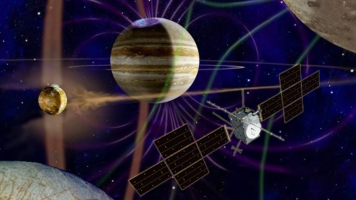In-situ particle and field measurements are a fundamental part of planetary exploration. However, due to the nature of such missions, the data can rarely be validated by comparisons with overlapping data sets from other instruments. Instead, computer simulations provide an important way to both analyse and validate in-situ measurements. ESA’s Spacecraft Plasma Interaction Software (SPIS) is commonly used to assess the risk of electrostatic discharges on ESA missions. For this co-funded research project we propose novel applications of SPIS: to develop an interplanetary and planetary plasma environment ’tool’ capability, to better understand the effects of environment perturbations and improve calibration and data analysis routines. To develop the method, we will use SPIS simulations of, and in comparison with, the first Jupiter Icy Moons Explorer (JUICE) measurements which will be obtained soon after launch. Due to the time consuming nature of such work, the preparations for analysing the data and calibrating the instruments should start without further delay. This research project will include: building and using a solar wind model as input for SPIS simulations of the interaction between JUICE and the solar wind; and using the simulation results to study perturbations in the JUICE measurements. The comparison between simulations and measurements will be used to improve analysis codes for the JUICE particle and field instrumentation. The project will be an important step in preparing JUICE to fulfil its scientific objectives, in particular to accurately characterise the plasma and field environments of Jupiter's magnetosphere and to determine if Jupiter's moon Ganymede is habitable. The new analysis method developed within this project will significantly contribute to improvements of analyses of space plasma and field data, not only for the JUICE mission but for all future planetary missions carrying the relevant instrumentation.

